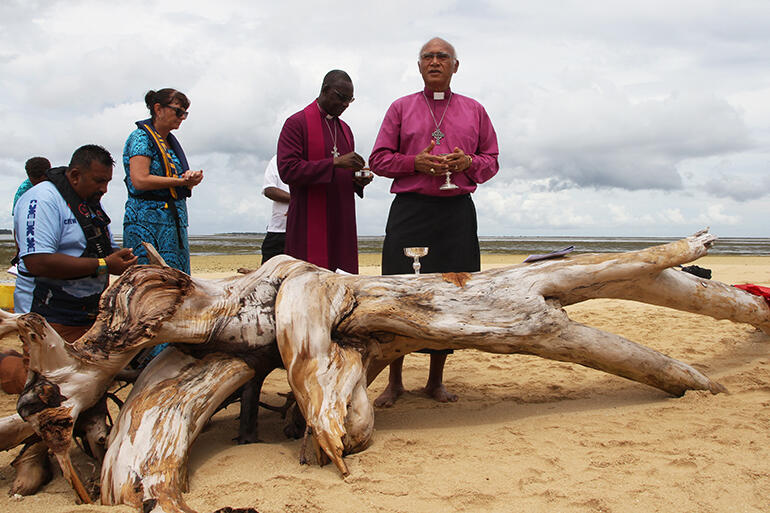
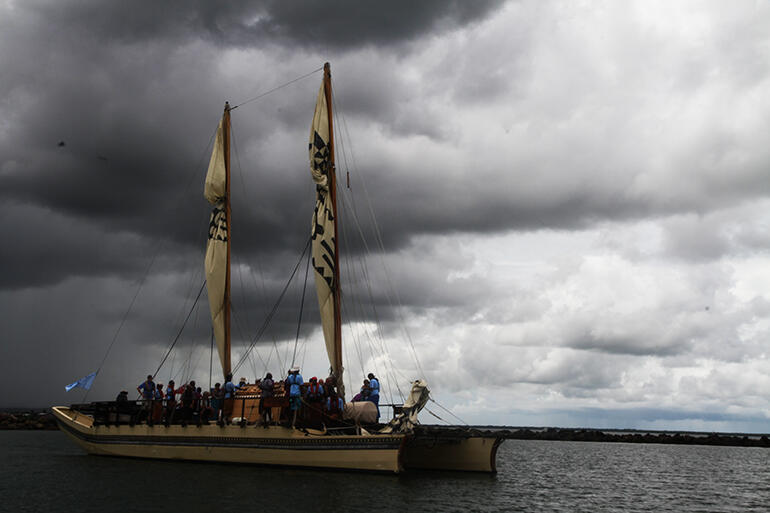
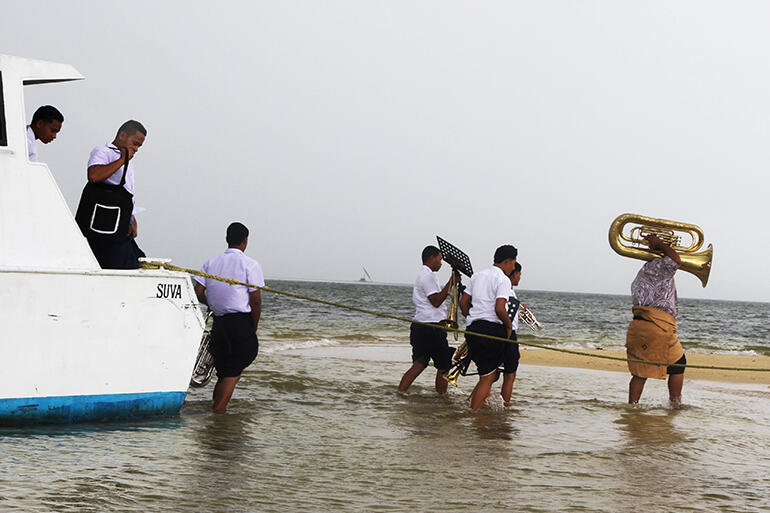
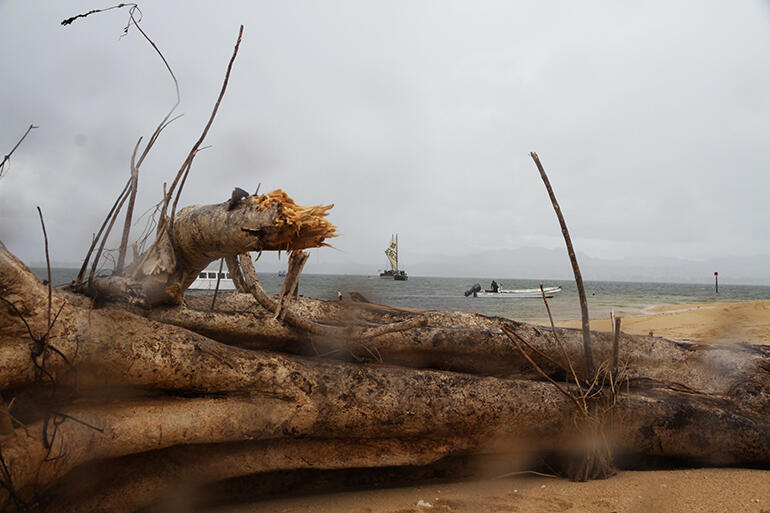
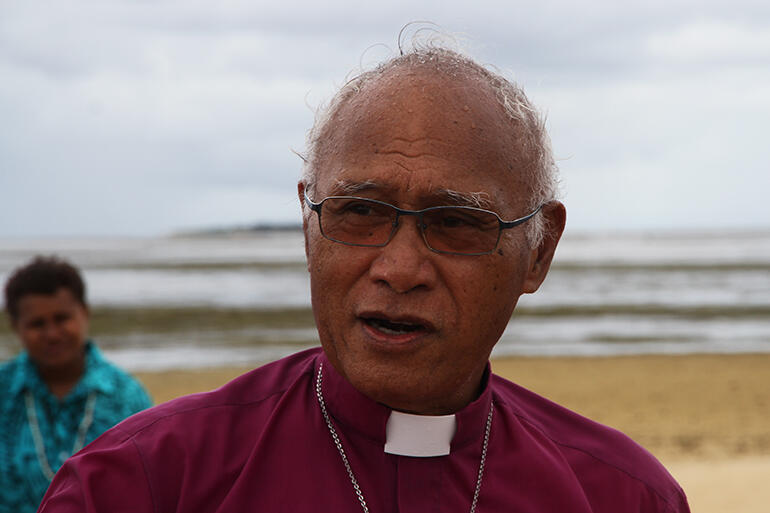
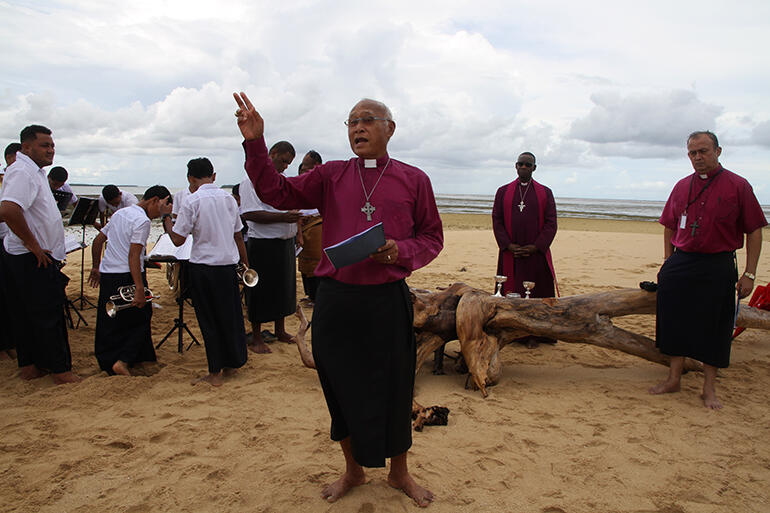
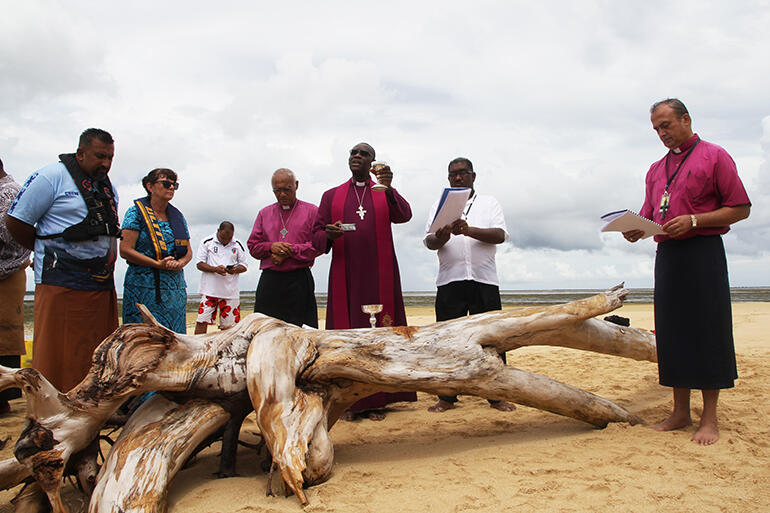
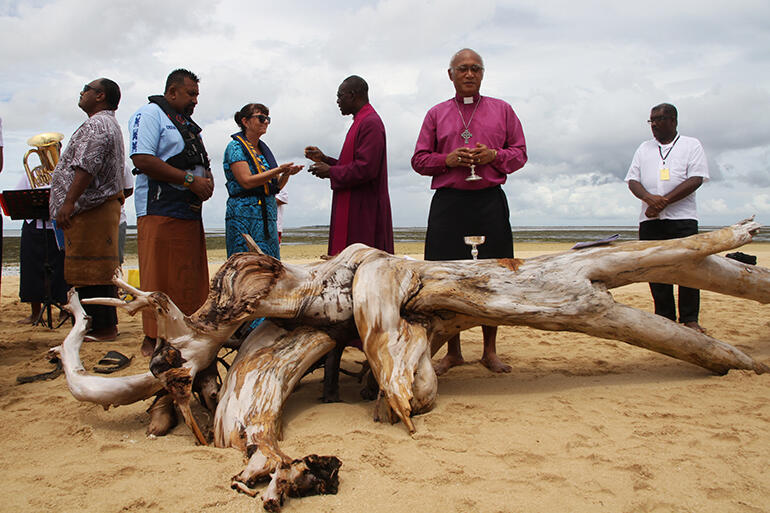
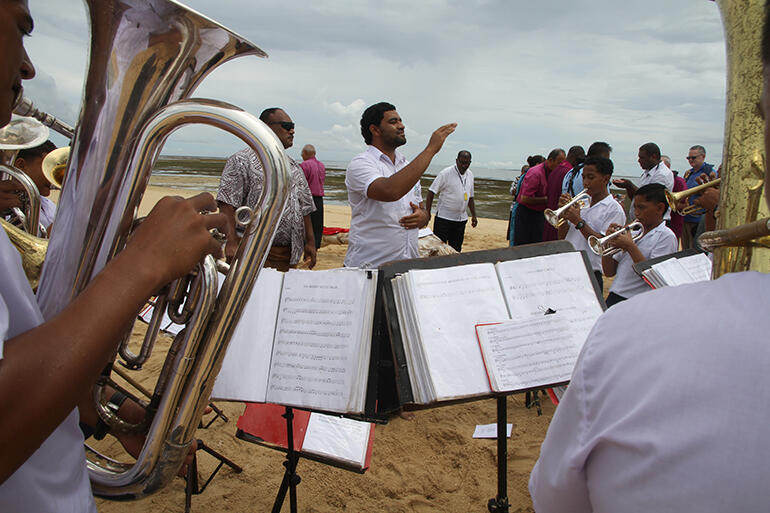
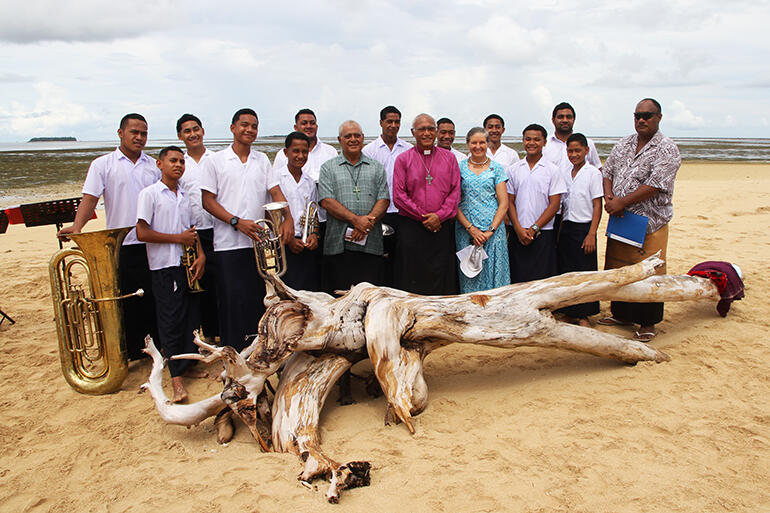
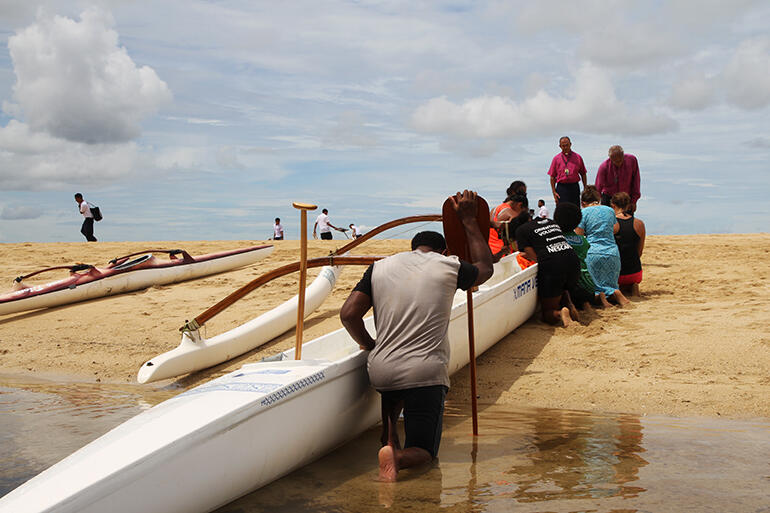
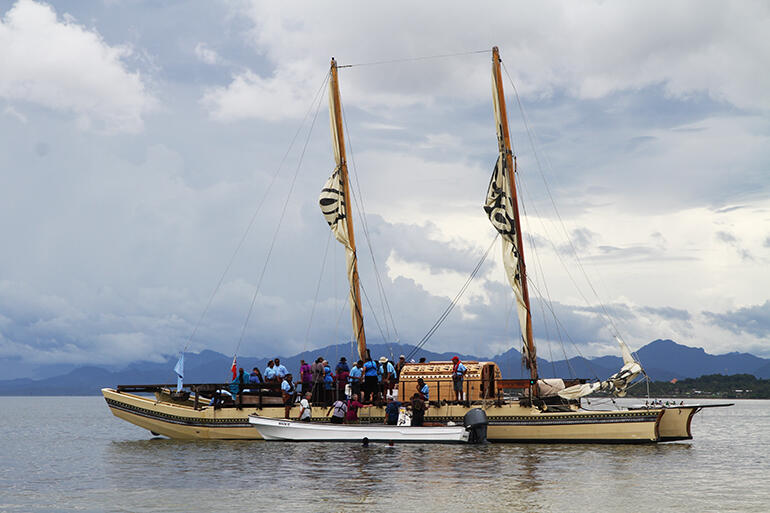
The Oceania fono wrapped up its deliberations on climate change in a most poignant fashion this afternoon – by sailing out in an oceangoing vaka to a sandbank in Suva Harbour to celebrate the Eucharist.
This sandbank – which is submerged now in a king tide – was, within living memory, an island dotted with coconut palms[1].
Now it is a reef of sand, with a few scattered tree trunks – which have been uprooted in previous cyclones and storms, washed out to sea, and shipwrecked on the sandbank.
One of those castaway trunks became the altar for today's sandbank Eucharist.
The members of the fono sailed out to the sandbank on the vaka Uto Ni Yala. As they disembarked, waded through the shallows then walked towards the tree trunk altar, squalls swept across the sandbank leaving everyone drenched:
"Welcome to our reality," said Archbishop Winston.
But then, as quickly as the sky had darkened, and squalls descended on the reef – the heavens lightened, the rain stopped and the wind eased when the Eucharist began.
And the elements seemed to underline the words of the blessing Archbishop Josiah Idowu Fearon[2] prayed at the end of the service:
The Waves of the Ocean of God's Love
Embrace you and carry you forward
With Christ Mast and Master
may you voyage courageously,
The Spirit of Peace and Power flow in and around you
to strengthen and to guide
through calm and storm. Amen
And may the Blessing of God, Father, Son and Holy Spirit
be with you this day and forever.
#
In the morning the members of the fono were given an update on climate change science by Professor Beth Holland, who is both the Director of the Pacific Centre for Environment and Sustainable Development (PaCE-SD), and the University of the South Pacific's Professor of Climate Change.
They heard too, from Inia Seruirata, who is Fiji's Minister for Agriculture, Rural & Maritime Development, and National Disaster Management – as well as Fiji's High-Level Climate Champion responsible for advancing the Global Climate Action Agenda.
They also heard presentations from the Oceania division of the Anglican Alliance, and from the Tongan youth team who had been taught to assess their communities' vulnerabilities to natural disaster – and who had then used that training to help minimise the trauma of Cyclone Gita.
At 4pm, after the vaka had returned from the sandbank, the Archbishop of Canterbury delivered his lecture: "Six Steps in the "Practice of Reconciliation" at the Holy Trinity Cathedral.
#
The fono concludes tomorrow, with Sunday worship at Holy Trinity Cathedral – with the Archbishop of Canterbury preaching.
There will be a final talanoa session in the afternoon, after which the fono members are expected to release a communique describing their discussions – and decisions.
[1] That island was called: Nukumbutho. During World War Two it was used by the RAF and the Australian Air Force to practice bombing raids. The tree cover was badly damaged by the bombing. However, Nukumbutho's desertification has happened since then – it has not survived rising sea-levels. Source: Rev James Bhagwan, Methodist minister in Fiji, and chaplain to the Uto Ni Yalo.
[2] The Archbishop of Canterbury was unable to take part in the trip to the sandbank. His travel to Fiji had been seriously disrupted by the severe weather affecting Europe. So he drew back to prepare for his 4pm lecture in Holy Trinity Cathedral.

















Comments
Log in or create a user account to comment.